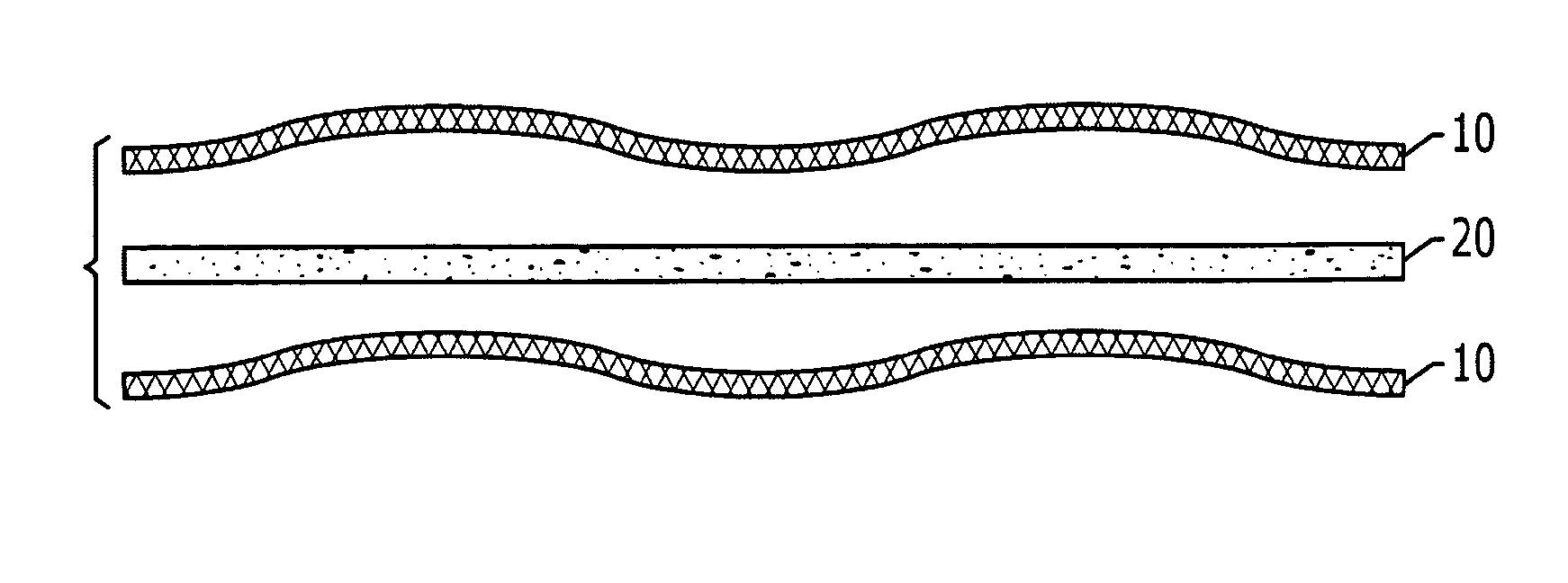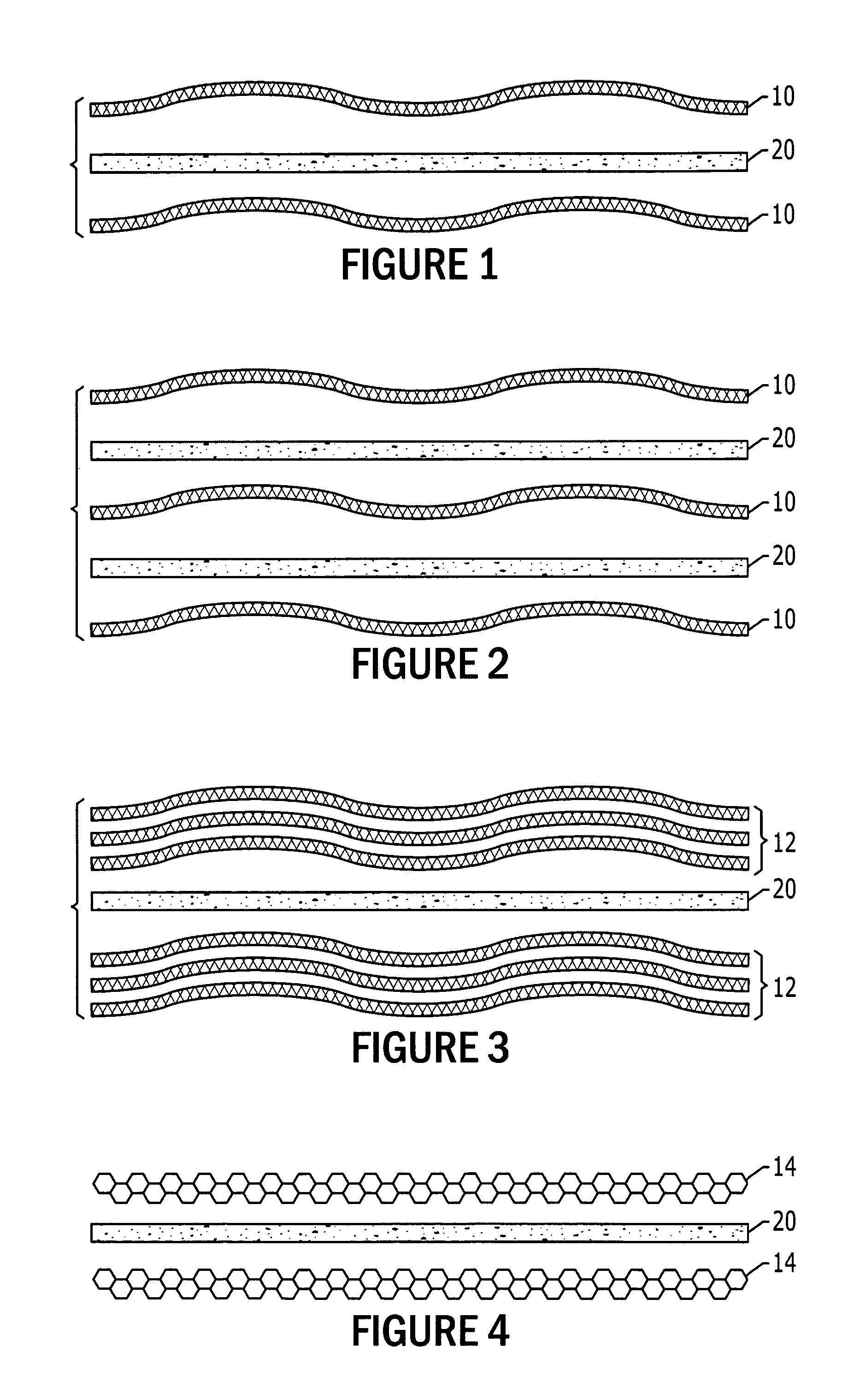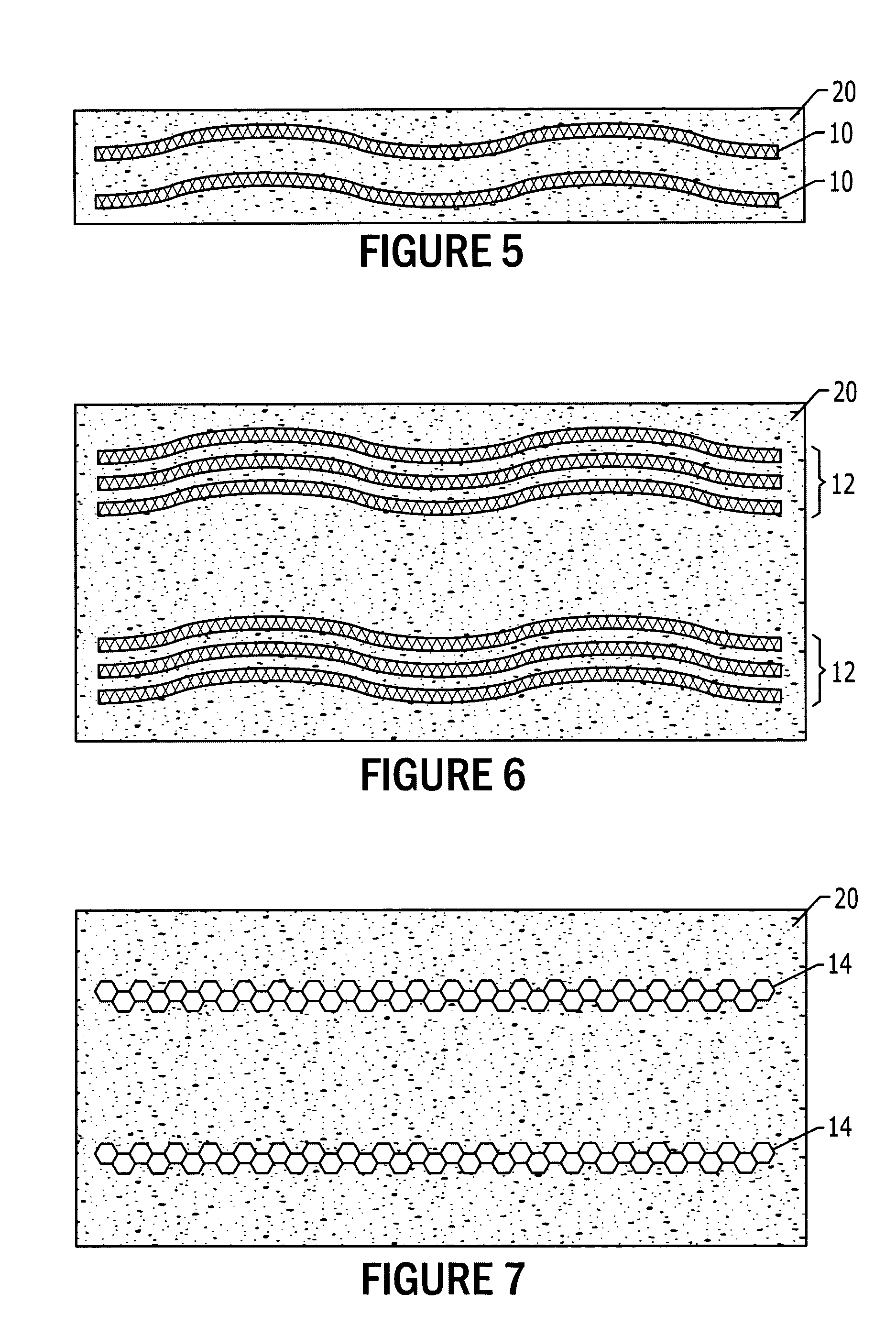Advanced multi-purpose ballistic insulation
a multi-purpose, ballistic insulation technology, applied in the field of insulation, can solve the problems of damage to critical systems of vehicles, engine components becoming high-speed projectiles, and damage to one or more of brakes, fuel, or electrical lines
- Summary
- Abstract
- Description
- Claims
- Application Information
AI Technical Summary
Benefits of technology
Problems solved by technology
Method used
Image
Examples
Embodiment Construction
[0028] The present invention now will be described more fully hereinafter with reference to the accompanying drawings, in which preferred embodiments of the invention are shown. This invention may, however, be embodied in many different forms and should not be construed as limited to the embodiments set forth herein; rather, these embodiments are provided so that this disclosure will be thorough and complete, and will fully convey the scope of the invention to those skilled in the art. Like numbers refer to like elements throughout.
[0029] Referring to FIG. 1, according to one embodiment, a laminate structure is formed by disposing a cellular layer 20 between two layers of woven polymeric fabric 10. The laminate is then compressed to form a unitary structure. The laminate may be held together by adhesives or stitching, or the layers may be held together by an external covering such as a fabric sheath. Referring to FIG. 2, the layering of fabric layer 10 and cellular layer 20 may be ...
PUM
| Property | Measurement | Unit |
|---|---|---|
| speeds | aaaaa | aaaaa |
| velocities | aaaaa | aaaaa |
| weight | aaaaa | aaaaa |
Abstract
Description
Claims
Application Information
 Login to view more
Login to view more - R&D Engineer
- R&D Manager
- IP Professional
- Industry Leading Data Capabilities
- Powerful AI technology
- Patent DNA Extraction
Browse by: Latest US Patents, China's latest patents, Technical Efficacy Thesaurus, Application Domain, Technology Topic.
© 2024 PatSnap. All rights reserved.Legal|Privacy policy|Modern Slavery Act Transparency Statement|Sitemap



